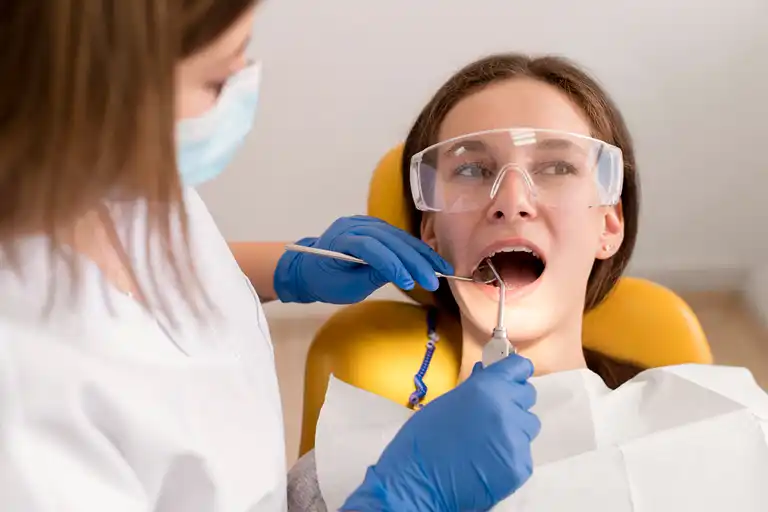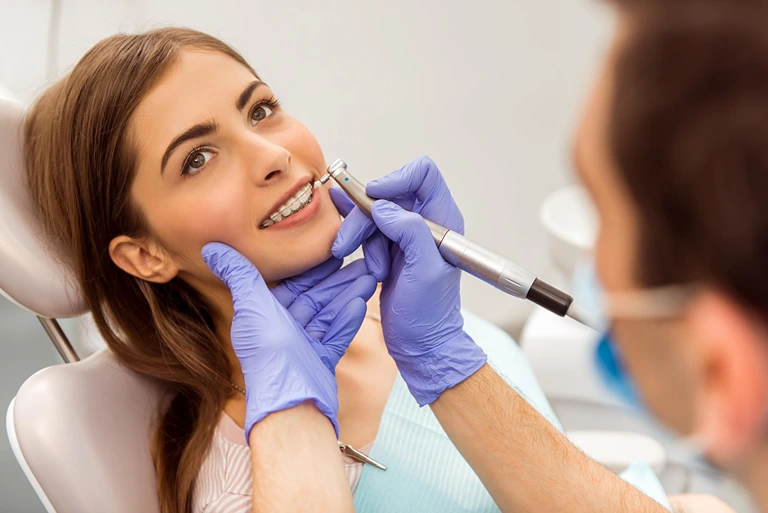Emergency Wisdom Teeth Removal: What You Need to Know

If you’ve ever had Emergency Wisdom Teeth Removal your wisdom teeth get stuck and cause quick, excruciating pain, you know how terrible it can be. When people are in this uncomfortable position, they often have to get their wisdom teeth taken out quickly. In this full guide, we’ll cover everything you need to know about emergency wisdom teeth removal, from the basics to how to take care of yourself after the process.
Emergency Wisdom Teeth Removal: Introduction
Wisdom teeth, also called third molars, usually come between 17 and 25 years of age. Some people have no problems with these teeth, but others do because they don’t have enough room in their mouths. These teeth come in late and are usually in the back of the mouth. If they are not taken care of properly, they can cause a number of problems.
Wisdom teeth are left over from when our ancestors ate tougher foods and needed these extra molars to help them chew them. But as we’ve learned to cook and changed what we eat, our jaws have shrunk, making it harder for these extra teeth to fit. This often causes the wisdom teeth to get stuck, which can cause pain, soreness, and even problems with your oral health.
What Are Emergency Wisdom Teeth Removal?
Wisdom teeth are the last set of molars that grow in your mouth’s back corners. They used to be important for our ancestors because they ate rougher, harder foods. But as our habits have changed over time, our jaws have shrunk, making it harder for wisdom teeth to come in correctly. This can cause a number of problems, like clogging, crowding, and instability.
During your recovery time, staying vigilant is key. If you notice things like really heavy bleeding, super intense pain that doesn’t get better with meds, or signs of infection like fever and pus around where they took out the tooth, you should totally get in touch with your dentist or the oral surgeon right away. They’ll check things out and give you the right advice to handle the problem. Your prompt response can make all the difference.
Common Issues with Emergency Wisdom Teeth Removal

Sometimes, when your wisdom teeth try to come in, there might not be enough space for them in your mouth. When this happens, they can get stuck and cause problems. This can lead to pain, swelling, and other not-so-nice feelings.
The way the wisdom teeth come in can also make things hard. They might push against your other teeth, making them look crowded and crooked. And sometimes, the teeth that are stuck can get infections or cysts, which can make things even worse.
So, it’s important to keep an eye on your wisdom teeth and talk to a dentist if you’re having any trouble. They can help you figure out the best way to handle the situation and keep your mouth feeling good!
There are four main types of impaction:
- Vertical Impaction: The tooth is stuck in an upright position but hasn’t fully erupted through the gums.
- Horizontal Impaction: The tooth is angled horizontally, often pressing against the adjacent tooth.
- Mesial Impaction: The tooth is angled forward, causing it to push against the neighboring tooth.
- Distal Impaction: The tooth is angled backward, towards the rear of the mouth.
Signs of an Emergency
It is very important to know the signs of a wisdom tooth problem. Imagine that you are in a lot of pain in the back of your mouth. Your gums might swell and even bleed. It’s hard to open your mouth, and it’s even harder to chew. If any of these sound familiar, you should go to the doctor as soon as possible.
When wisdom teeth get stuck, they can cause a lot of pain. You might feel a sharp pain that starts in your mouth and moves to your jaw and even your ears. Your gums could swell in that area, making it hard to open your mouth all the way and chew without pain. When all of these things happen, remember that it’s a clear sign that you need to see a dentist as soon as possible.
Why Emergency Wisdom Teeth Removal is Necessary
When your wisdom teeth start hurting really bad, you might need to get them removed ASAP. Ignoring them could lead to infections, messing up your other teeth, and even messing with your overall mouth health. So, taking care of it fast can save you from having to do more complicated and pricey dental work later on.
Ignoring impacted wisdom teeth can lead to various issues:
- Infection: Bacteria can accumulate around the impacted tooth, causing infection and abscesses.
- Cysts: Fluid-filled sacs can form around impacted teeth, potentially damaging the jawbone.
- Damage to Nearby Teeth: Impacted wisdom teeth can push against adjacent teeth, causing misalignment or damage.
- Pain: Impacted teeth often lead to pain and discomfort, affecting your quality of life.
- Gum Problems: Swelling, redness, and bleeding of the gums around the impacted tooth can occur.

Preparing for the Procedure
Impacted wisdom teeth sometimes cause really bad pain. You might experience an intense ache that spreads from your mouth to your jaw, and even to your ears. The gums around that area may swell, causing difficulty in fully opening your mouth and chewing without discomfort. When you experience all of these things, remember that a dental professional should be urgently reached out to. They’ll also tell you what to do before the surgery, like not eating for a while, and they’ll help you plan how to get to and from the dentist’s office.
Your dentist will provide you with specific pre-operative instructions to ensure a smooth procedure:
- Fasting: You’ll likely be asked to avoid eating or drinking for a certain period before the surgery.
- Medication: Inform your dentist about any medications you’re taking, as some might interfere with the procedure.
- Arrangements: Plan for someone to accompany you to the appointment and drive you home afterward, especially if you’ll be under sedation.
The Emergency Wisdom Teeth Removal Process
Alright, so when it’s time for emergency wisdom teeth removal, there are a few things that happen. To begin with, they’ll give you something to make sure you’re not uncomfortable during the whole thing – it’s called anesthesia. Then, the oral surgeon will cut open your gum a bit to get to the stuck tooth. Sometimes, they might have to take out the tooth in pieces to make it easier. Once the tooth is out, they’ll stitch up the cut they made to help it heal.
The extraction process is tailored to the specific case and the type of impaction. Here’s an overview of the steps involved:
- Anesthesia: You’ll receive the appropriate type of anesthesia based on your dentist’s recommendation.
- Incision: An incision is made in the gum tissue to expose the impacted tooth and surrounding area.
- Extraction: The tooth is carefully removed, either in one piece or in sections, depending on its position.
- Cleaning: Any debris or bone fragments are removed from the surgical site.
- Closure: The incision is closed with stitches, which may be dissolvable or require removal in a follow-up visit.
Anesthesia Options
Making sure you’re comfortable during the procedure is really important. How they make you feel during it depends on how hard it is to take out your teeth and what you like. They can use something called local anesthesia to make the area around your teeth numb. Or if you want, they can give you something to help you relax and not feel any pain, either by making you sleepy or by putting you in a deep sleep. It’s all about what works best for you.
The type of anesthesia used depends on various factors, including
your medical history, the complexity of the procedure, and your anxiety levels. Here are the anesthesia options commonly used for emergency wisdom teeth removal:
- Local Anesthesia: This numbs the specific area being treated, allowing you to remain awake during the procedure.
- Sedation: This involves administering medication to help you relax and feel drowsy, although you’ll still be conscious.
- General Anesthesia: You’ll be completely asleep during the procedure, usually administered in a hospital setting.
Recovery and Aftercare
Once you’ve gone through that emergency wisdom teeth removal, the time right after is really important to heal up well. You might have some swelling and not-so-great feelings, but don’t worry – the doctor will give you medicine to help with the pain and suggest putting something cold on your face.
But the key is to follow what your dentist or surgeon tells you to do afterward. They might say you should be careful about what you eat, skip certain activities for a while, and keep your mouth extra clean. Just stick with their advice, and you’ll be back to your usual self in no time!
Managing Pain and Discomfort
So, after any dental stuff, even when they’re getting rid of those emergency wisdom teeth, it’s pretty normal to have some pain and swelling. It’s like your mouth’s way of saying, “Hey, something happened here!”
But don’t worry, your dentist knows the deal. They might suggest you take some pain relievers you can just buy at the store, or if things are a bit tougher, they might even give you some stronger ones with a prescription.
And here’s a little tip: if you put something cold on the outside of your face, like an ice pack or something chilly, it can actually help bring down the swelling and make that achy feeling a bit better. So, they’ve got your back and want to make sure you’re feeling okay.
Possible Complications

Complications following wisdom teeth removal aren’t very common, but they can indeed occur. Potential risks include infection, the occurrence of a dry socket (where the blood clot dislodges from the socket), and the possibility of nerve damage. However, here’s the important part: adhering to your dentist’s post-procedure instructions and attending all scheduled follow-up appointments significantly reduces the likelihood of these occurrences. It’s akin to delivering a decisive blow to those risks and effectively keeping them away.
When to Seek Medical Help
Staying vigilant is key during your recovery period. If you notice things like experiencing really heavy bleeding, enduring super intense pain that doesn’t improve with medication, or observing signs of infection like fever and pus around the area where they removed the tooth, you should immediately contact your dentist or the oral surgeon. They will check things out and provide you with the right advice to handle the situation. Taking prompt action can make all the difference.
Tips for a Smooth Recovery of Emergency Wisdom Teeth Removal
To ensure a smooth recovery after emergency wisdom teeth removal, follow these tips:
- Stay hydrated to aid in the healing process.
- Stick to a soft-food diet to avoid placing excessive strain on the surgical site.
- Avoid using straws, as the suction can dislodge the blood clot and lead to a dry socket.
- Practice good oral hygiene, but be gentle around the surgical area.
- Attend any follow-up appointments to ensure proper healing and identify any potential issues early on.
Long-Term Oral Health
Once you undergo the procedure and recover, it is crucial for you to uphold good oral hygiene practices. Regular dental check-ups and cleanings achieve the prevention of future dental issues. Additionally, potential solutions for addressing any persistent misalignment or crowding problems arising from impacted wisdom teeth might be explored by your dentist.
Emergency Wisdom Teeth Removal: Final Thoughts
Emergency removal of wisdom teeth is a popular dental procedure that can relieve pain, stop problems, and protect your oral health. By knowing how important it is to get treatment right away, preparing for the process, and taking care of yourself afterward, you can make sure your recovery goes smoothly and enjoy better oral health in the long run.
FAQs
Is emergency wisdom teeth removal painful?
The procedure itself is not painful as you’ll be under anesthesia. However, you may experience some discomfort during the recovery phase, which can be managed with medication.
Can I eat normally after the procedure?
Initially, you’ll need to stick to a soft-food diet to avoid disrupting the surgical site. As you heal, you can gradually reintroduce regular foods.
How long does the recovery take?
Recovery duration varies from person to person. Generally, it takes about a week for initial healing, but complete healing may take a few weeks.
Are there any alternatives to removal?
In some cases, if wisdom teeth are not causing problems and are properly positioned, they can be kept. Regular monitoring will be necessary.
When can I resume regular activities?
You can typically resume regular activities once you’ve addressed the issues with your impacted wisdom teeth and received proper treatment from a dentist. It’s important to follow their advice on when it’s safe to return to your usual routine, as recovery times can vary. If you’re unsure, it’s best to consult your dentist for guidance on when you can resume your regular activities.



